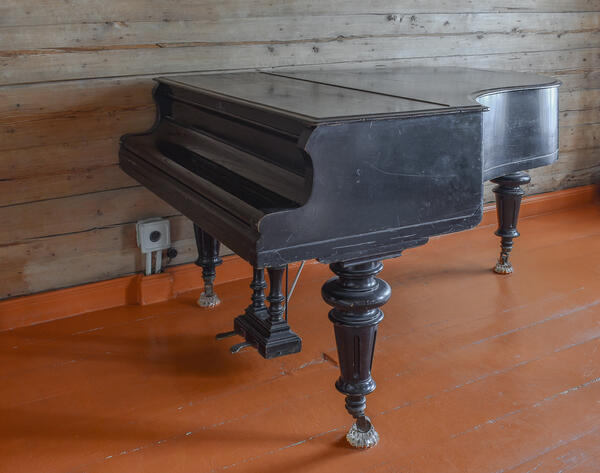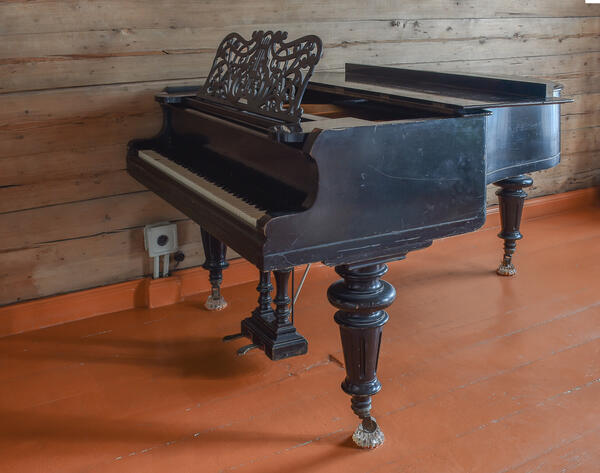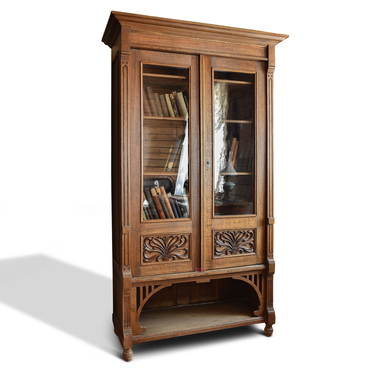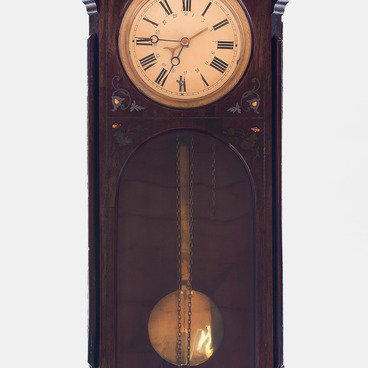The museum houses a cabinet grand piano manufactured by R.Rathke. Its body is a shell — a wooden frame with braces. In this case, it is a horizontal wing-shaped wooden box, which stands on three massive chiseled legs on bronze rollers. The back of the piano case and part of its right side are bounded by a curved side wall.
The instrument’s keyboard consists of 50 white and 35 black keys and is protected by a special cover or fall board. Under the middle part of the keyboard there is a “lyre” in the form of two chiseled balusters with pedals mounted on it. The front part of the upper lid is hinged, and has a pull-out music stand underneath. A molded round badge is placed on the frame, the manufacturer’s trademark, depicting two lions holding a lyre with the letter R in the middle.
The R.Rathke company was created by Robert-Julius-Ferdinand Rathke, originally from Prussia. In 1868, he established his own workshop in the city of Tartu, which grew to the size of a factory. In 1891, it burned down, after which Robert Rathke moved to St. Petersburg. There he opened a store on Nevsky Prospekt and a factory on Bolshoy Prospekt on the Petrogradskaya side, at that time the St. Petersburg side. After buying the company of his teacher, a master from Riga, Johan Christian Nikolai Tresselt, Robert Rathke began to produce copies of pianos from Steinway & Sons, C. Bechstein, and Blüthner under his name.
The R.Rathke company was a piano dynasty of German craftsmen and manufacturers. It was a small enterprise with 100 employees. On average, up to 400 instruments were produced there per year. This manufacturer was honored with several awards: the Imperial Medal “For Diligence and Art” in St. Petersburg, the gold medal of the All-Russian Industrial and Art Exhibition in Nizhny Novgorod, and others.





